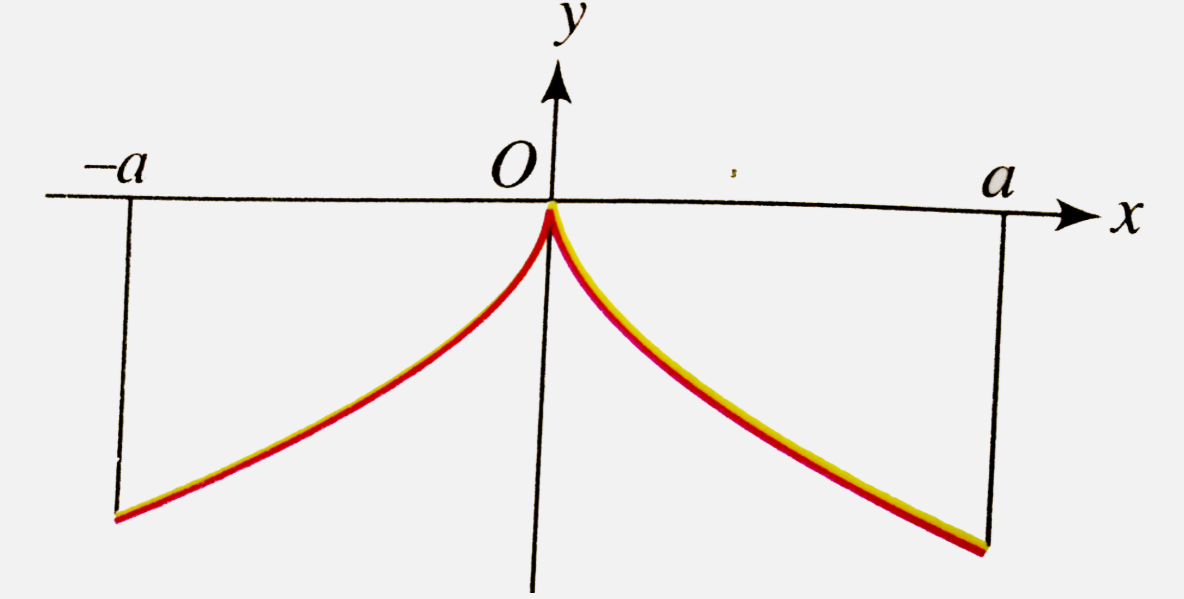Period of f(x)=sgn([x]+[−x])is equal to (where [.] denotes greatest integer function Solution in Bengali
1
2
3
does not exist
The correct Answer is:A
Let f(x)=sgn([x]+{−x])
={{:(0,,x in I),(-1, , x cancelinI):}
Hence f(x) is periodic with period 1.
Topper's Solved these Questions
- FUNCTIONSBOOK - CENGAGE PUBLICATIONCHAPTER - FUNCTIONSEXERCISE - Multiple Correct Answers Type
9 Videos
- FUNCTIONSBOOK - CENGAGE PUBLICATIONCHAPTER - FUNCTIONSEXERCISE - Comprehension Type
7 Videos
- EQUATION OF PLANE AND ITS APPLICATIONS -IIBOOK - CENGAGE PUBLICATIONCHAPTER - EQUATION OF PLANE AND ITS APPLICATIONS -IIEXERCISE - DPP 3.4
8 Videos
- GETTING STARTED WITH GRAPHSBOOK - CENGAGE PUBLICATIONCHAPTER - GETTING STARTED WITH GRAPHSEXERCISE - Exercises 1.18
1 Videos
Similar Questions
If f(x)=3x2−x+1, then find f(−1)
View SolutionLet f(x)=x2−2x−1∀x∈R.Letf:(−∞,a]→[b,∞), where a is the largest real number for which f(x) is bijective.
If f:R→R, then range of values of k for which equation f(|x|)=k has 4 distinct real roots is
View SolutionLet A(0,6,6), B(6,6,0) and C(6,0,6) are three points and point D is moving on the line x+z−3=0=y. If G is centroid of ΔABC, then minimum value of GD is
View SolutionFollowing is the graph of y = f'(x) and f(0) = 0 .

(a) What type of function y = f'(x) is ? Odd or even?
(b) What type of function y = f(x) is ? Odd or even?
(c) What is the value of ∫a−af(x)dx?
(d) Has y = f(x) point of inflection?
(e) What is the nature of y = f(x)? Monotonic or non-monotonic?
View SolutionPeriod of f(x)=sgn([x]+[-x]) is equal to (where [.] denotes greatest integer function
View SolutionThe function,f(x)=[|x|]-|[x]| where [] denotes greatest integer function:
View SolutionThe value of ∫10−1sgn(x−[x])dx is equal to (where, [:] denotes the greatest integer function
View SolutionThe function f(x)=sgn(x−1).Cot−1[x−1] is ([x]denotes greatest integer function of x)
View SolutionIf F(x)=sinπ[x]{x} then F(x) is (where {.} denotes fractional part function and [.] denotes greatest integer function and sgn(x) is a signum function)
View Solutionlimx→0[sin(sgn(x))(sgn(x))], where [.] denotes the greatest integer function, is equal to
View SolutionThe number of points where f(x)=sgn(x2−3x+2)+[x−3],x∈[0,4], is discontinuous is (where [.] denotes the greatest integer function )_____.
View SolutionLet f(x)=exsgn(x+[x]) , where sgn is the signum function and [x] is the greatest integer function . Then
View SolutionPeriod of f(x)=sgn([x]+[−x])is equal to (where [.] denotes greatest integer function
View Solutionlimx→0[sin(sgn(x))(sgn(x))], where [.] denotes the greatest integer function, is equal to
View SolutionPeriod of f(x)=sgn([x]+[−x])is equal to (where [.] denotes greatest integer function
View SolutionThe number of points where f(x)=sgn(x2−3x+2)+[x−3],x∈[0,4], is discontinuous is (where [.] denotes the greatest integer function )_____.
View Solution
